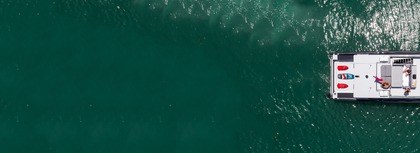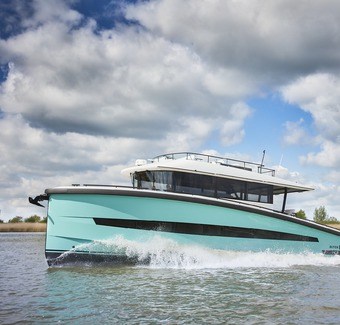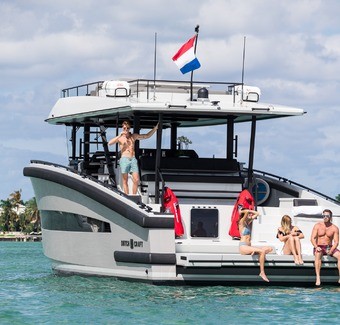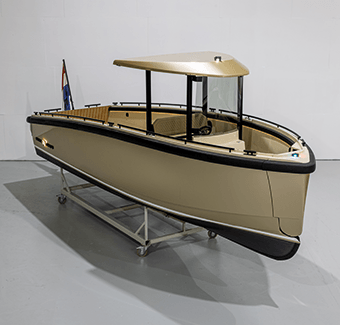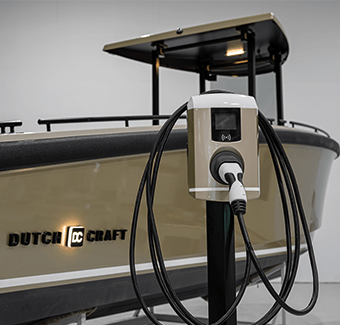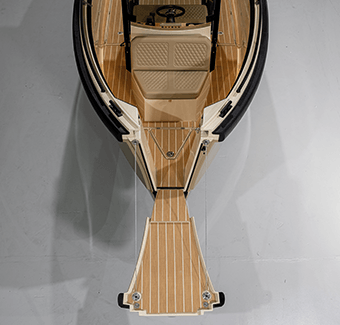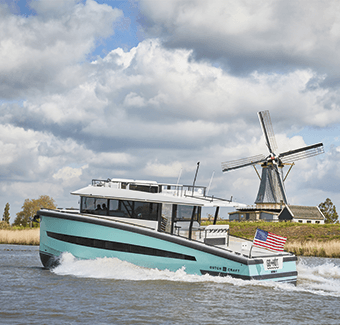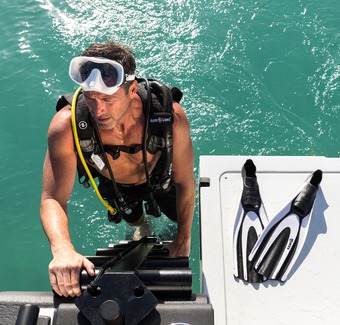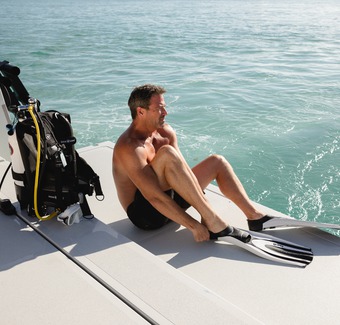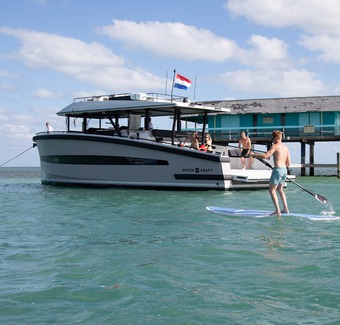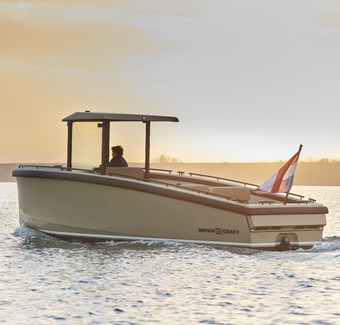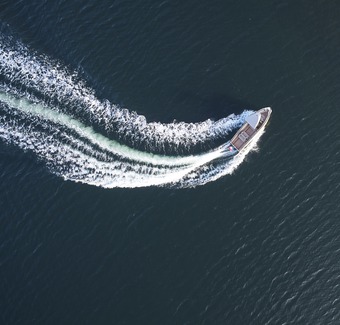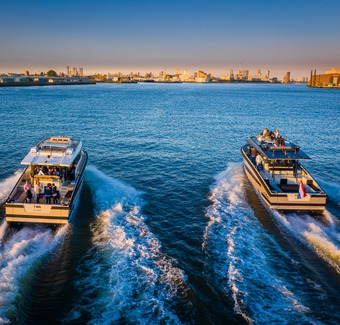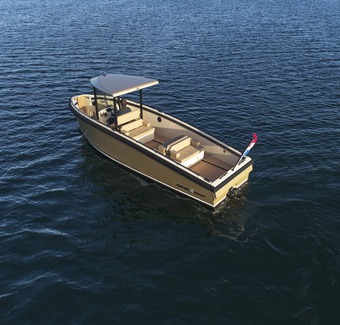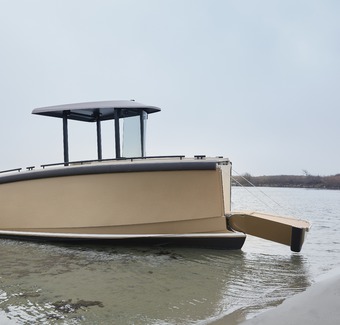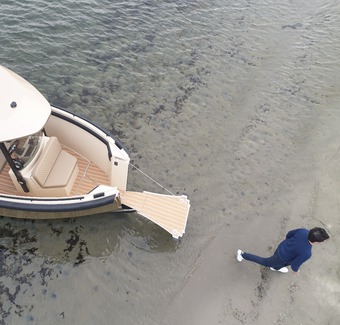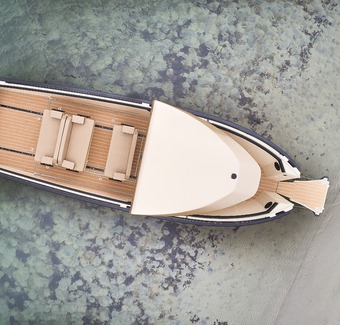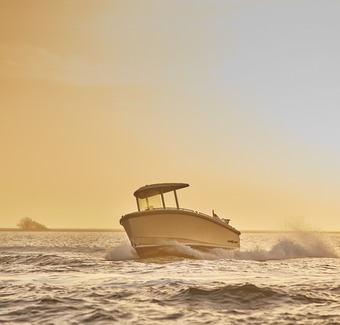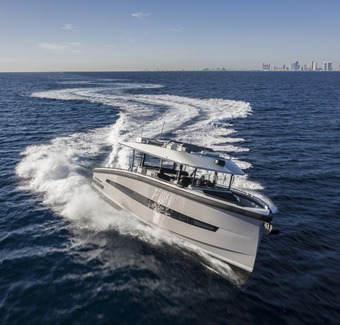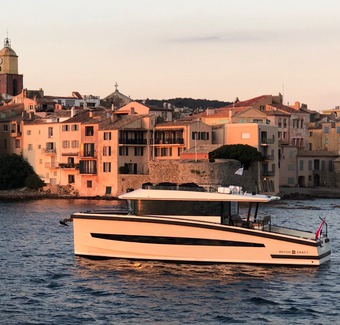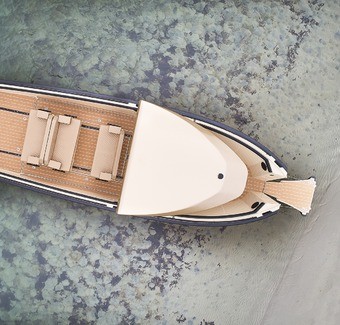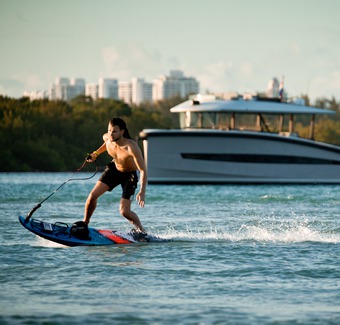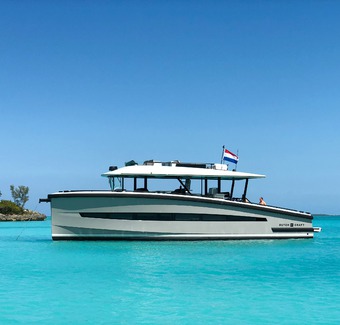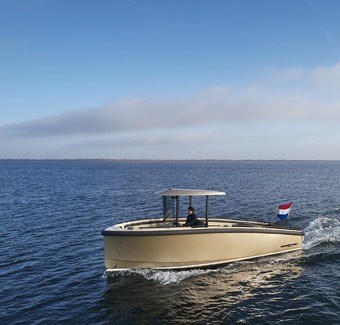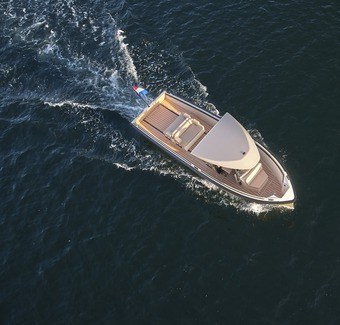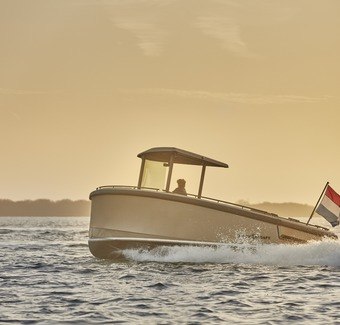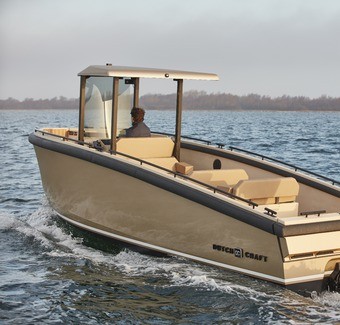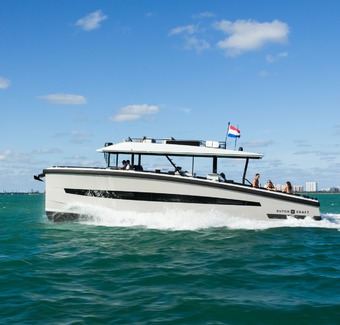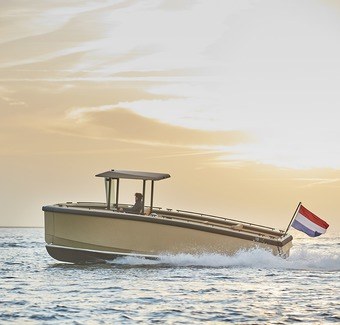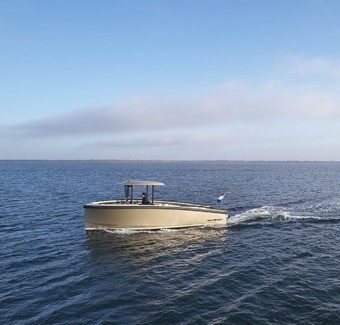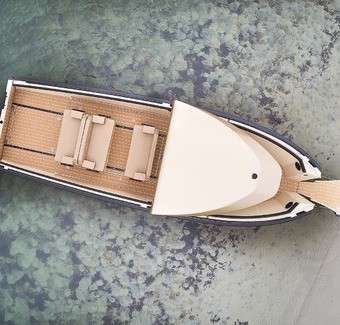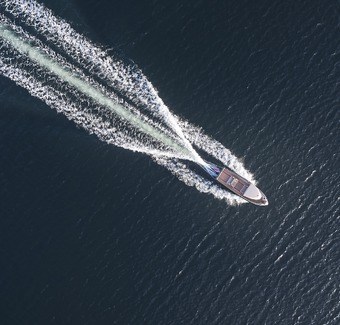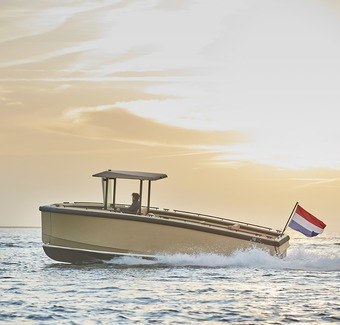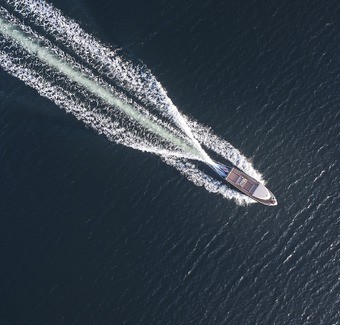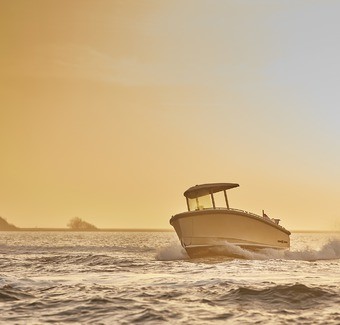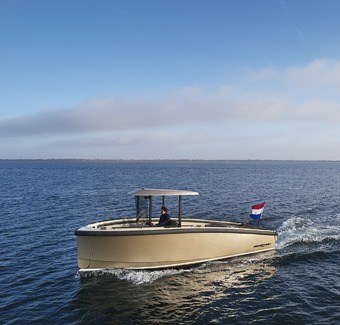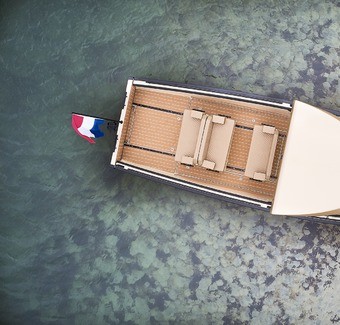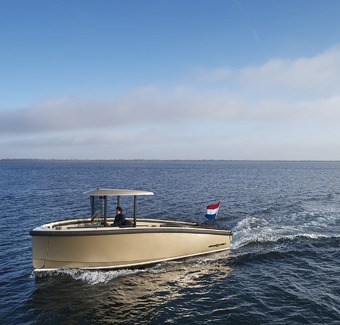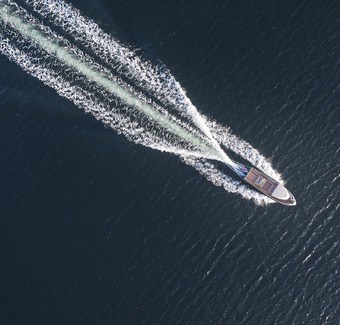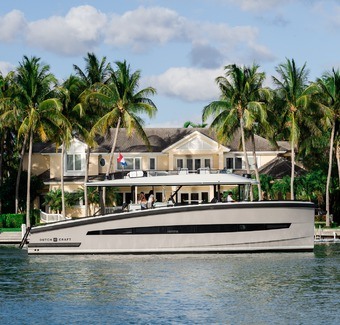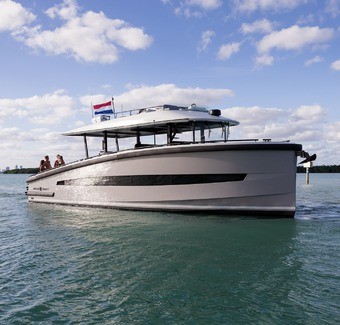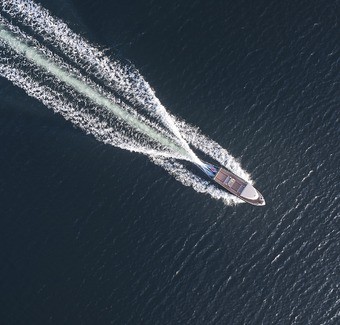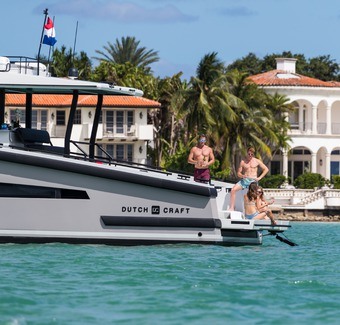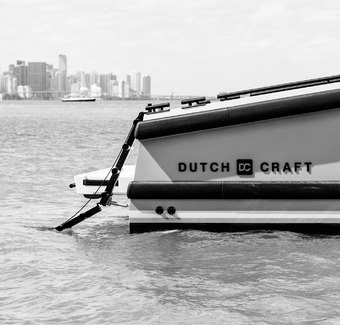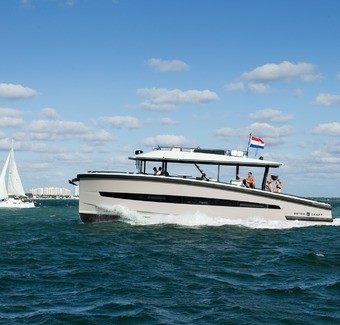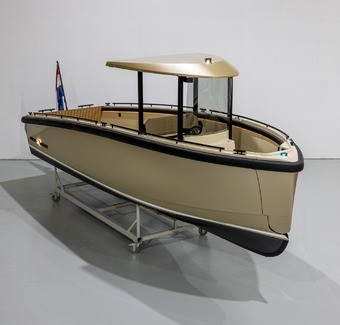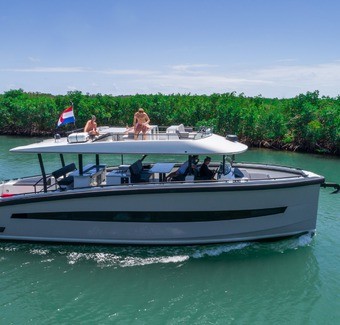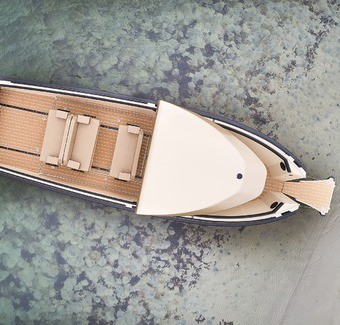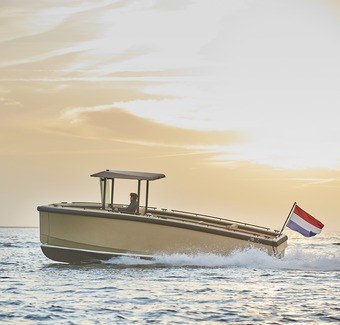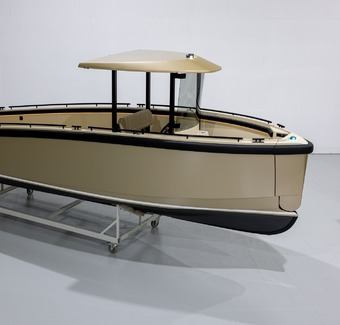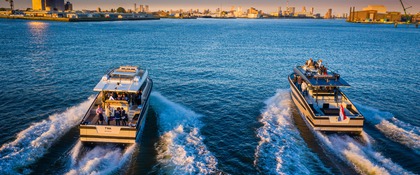
The DutchCraft 56 is a surprisingly practical boat from the maker of Zeelanders.
This article originally appeared in the January 2020 issue, Passagemaker
Most trawler-type yachts generally conform to a sound, seaworthy style that has been developed and refined over the years, adding comfort and finishing to workboat and fishing-boat heritage. But what if you wanted to start from scratch to design a cruising yacht? What would you come up with?
This was the question that exercised the mind of Sietse Koopmans, the Dutchman who, after years of building cruising boats, developed and built the range of Zeelander yachts known for their stylish curves and luxurious touches. He was trying to think about what to create next.
“For years, I have pondered the idea of starting with a clean sheet of paper to develop a design that met all the requirements of a cruising yacht and which would be adaptable to a wide variety of applications and uses, but all based around the same basic concept,” he says. “The designs gradually developed into a cohesive concept, and so I stepped aside from the Zeelander production and started DutchCraft to put my ideas into production.”
The result was one of the most interesting designs to grace the Cannes Yachting Festival in the South of France this past autumn. The DutchCraft 56 is one of the most practical yachts I have seen, and it is about as far removed from the look of Zeelanders as I could imagine.
The defining characteristic of this yacht is the powerful reverse sheerline that drops down quite sharply toward the stern, which is matched to a vertical bow. By contrast, the superstructure has a sleek line with the low-profile flybridge almost hidden from view, as it is recessed into the top of the superstructure. The resulting look is more user-friendly than it is graceful, allowing for clear views from the salon and helm—and allowing the boat to pass under bridges, which are a constant presence on some Dutch waterways.
Also unusual in this boat’s styling is the metalwork. It’s all black, as opposed to the stainless steel favored on most yachts. DutchCraft’s powder-coated metal allows for reduced maintenance and no irritating reflections.
And, just where you might expect to find sunpads and seating, the aft deck is an open space that can be equipped for whatever use the owner wants. There is space here for a fighting chair, a dive ladder, a crane, a submersible or even a small automobile. At the stern, the transom gate folds down for water access, and there are side lockers for stowage.
Innovations continue inside the DutchCraft 56, too. Take, for instance, the belowdecks layout. There are four staterooms, each for two people. The master is an en suite setup in the bow. Abaft the master are a twin-berth stateroom to starboard and a twin-berth stateroom to port—but that port stateroom also serves as the pass-through heading farther aft, through a head and then on to another twin-berth stateroom that could be for crew, since it has access to the engine compartment via a watertight door.
Finishing on the DutchCraft is minimalistic, with white finishes and fabrics, and precious few adornments. The word that comes to mind when describing the interior is functional.
The helm is also functional—highly so, with a panoramic view ahead from the double bench seat. Instead of the normal array of rocker switches, the DutchCraft 56 has rotating switches for the main electrical controls; there is a joystick for close--quarters maneuvering.
For power, owners can choose from Volvo IPS600 to IPS950 pod drives, or John Deere diesels paired with waterjet drives. Depending on the engine package, top speed is estimated at 40 knots. Standard fuel tankage delivers an 840-nautical-mile range at 7 knots, the builder says.
I got aboard and found the ride to be remarkably free of slamming, thanks to the deep-V hull with a deadrise of 18 degrees. The hull tended to cut through the waves rather than ride over them. Construction is in composites using a sandwich hull method with PVC as the core material, reducing vibrations.
This new yacht from DutchCraft is an attempt to bring a new approach to passagemaker design. As Floris Koopmans, the marketing coordinator at DutchCraft, put it, “We have created the Swiss Army knife of boats.”
Certainly, the DutchCraft 56 won’t be to everyone’s liking, but for boaters who favor modern practicality instead of traditional styling, it’s an interesting new option, indeed.
This article originally appeared in the January 2020 issue, Passagemaker
Most trawler-type yachts generally conform to a sound, seaworthy style that has been developed and refined over the years, adding comfort and finishing to workboat and fishing-boat heritage. But what if you wanted to start from scratch to design a cruising yacht? What would you come up with?
This was the question that exercised the mind of Sietse Koopmans, the Dutchman who, after years of building cruising boats, developed and built the range of Zeelander yachts known for their stylish curves and luxurious touches. He was trying to think about what to create next.
“For years, I have pondered the idea of starting with a clean sheet of paper to develop a design that met all the requirements of a cruising yacht and which would be adaptable to a wide variety of applications and uses, but all based around the same basic concept,” he says. “The designs gradually developed into a cohesive concept, and so I stepped aside from the Zeelander production and started DutchCraft to put my ideas into production.”
The result was one of the most interesting designs to grace the Cannes Yachting Festival in the South of France this past autumn. The DutchCraft 56 is one of the most practical yachts I have seen, and it is about as far removed from the look of Zeelanders as I could imagine.
The defining characteristic of this yacht is the powerful reverse sheerline that drops down quite sharply toward the stern, which is matched to a vertical bow. By contrast, the superstructure has a sleek line with the low-profile flybridge almost hidden from view, as it is recessed into the top of the superstructure. The resulting look is more user-friendly than it is graceful, allowing for clear views from the salon and helm—and allowing the boat to pass under bridges, which are a constant presence on some Dutch waterways.
Also unusual in this boat’s styling is the metalwork. It’s all black, as opposed to the stainless steel favored on most yachts. DutchCraft’s powder-coated metal allows for reduced maintenance and no irritating reflections.
And, just where you might expect to find sunpads and seating, the aft deck is an open space that can be equipped for whatever use the owner wants. There is space here for a fighting chair, a dive ladder, a crane, a submersible or even a small automobile. At the stern, the transom gate folds down for water access, and there are side lockers for stowage.
Innovations continue inside the DutchCraft 56, too. Take, for instance, the belowdecks layout. There are four staterooms, each for two people. The master is an en suite setup in the bow. Abaft the master are a twin-berth stateroom to starboard and a twin-berth stateroom to port—but that port stateroom also serves as the pass-through heading farther aft, through a head and then on to another twin-berth stateroom that could be for crew, since it has access to the engine compartment via a watertight door.
Finishing on the DutchCraft is minimalistic, with white finishes and fabrics, and precious few adornments. The word that comes to mind when describing the interior is functional.
The helm is also functional—highly so, with a panoramic view ahead from the double bench seat. Instead of the normal array of rocker switches, the DutchCraft 56 has rotating switches for the main electrical controls; there is a joystick for close--quarters maneuvering.
For power, owners can choose from Volvo IPS600 to IPS950 pod drives, or John Deere diesels paired with waterjet drives. Depending on the engine package, top speed is estimated at 40 knots. Standard fuel tankage delivers an 840-nautical-mile range at 7 knots, the builder says.
I got aboard and found the ride to be remarkably free of slamming, thanks to the deep-V hull with a deadrise of 18 degrees. The hull tended to cut through the waves rather than ride over them. Construction is in composites using a sandwich hull method with PVC as the core material, reducing vibrations.
This new yacht from DutchCraft is an attempt to bring a new approach to passagemaker design. As Floris Koopmans, the marketing coordinator at DutchCraft, put it, “We have created the Swiss Army knife of boats.”
Certainly, the DutchCraft 56 won’t be to everyone’s liking, but for boaters who favor modern practicality instead of traditional styling, it’s an interesting new option, indeed.
This article originally appeared in the January 2020 issue, Passagemaker
